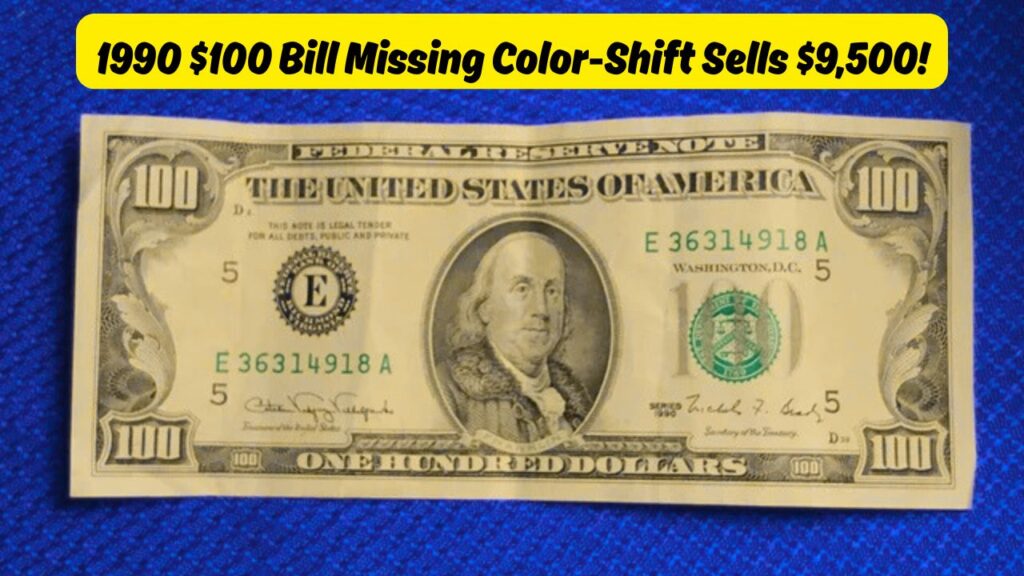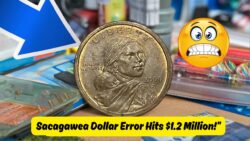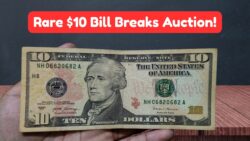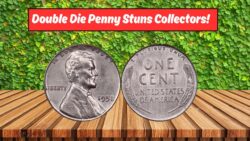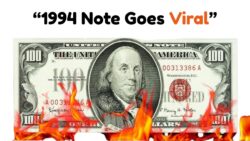1990 $100 Bill – If you’ve ever held onto an old $100 bill thinking it might one day be worth something more than face value, you could be sitting on a small fortune—especially if it dates back to 1990 and lacks a modern security feature. One such note, a 1990 $100 bill without color-shifting ink, recently sold at auction for an eye-popping $9,500. Here’s everything you need to know about why collectors are going crazy for this rare currency piece and how to check if you own one.
Why This 1990 $100 Bill Is So Special
In 1990, the U.S. Treasury hadn’t yet begun using advanced security features such as color-shifting ink or watermarks on currency. As counterfeit technology advanced, so did the need for currency redesign. This makes unmodified pre-1996 bills extremely collectible today, especially if they’re in mint condition.
Key reasons this $100 bill stands out:
- No color-shifting ink: Later $100 bills feature ink that changes color under different lighting conditions. This one doesn’t.
- Crisp Uncirculated (CU) condition: This bill was likely never folded or used in daily transactions.
- Low production series: Some bills from specific Federal Reserve Banks or certain serial number blocks are rarer than others.
- Strong demand among collectors: Currency collectors prize these bills for their historic and visual uniqueness.
A Look Back at U.S. Currency in the 1990s
Before high-tech counterfeiting deterrents were introduced, bills like the 1990 $100 note relied on older printing methods. These earlier designs are often viewed as pure representations of American currency before the “big changes” of the late ’90s and 2000s.
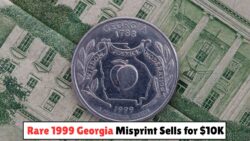 This 1999 Georgia Quarter With Misprint Just Hit $10,000 at Auction – Still in Circulation!
This 1999 Georgia Quarter With Misprint Just Hit $10,000 at Auction – Still in Circulation!
Features of 1990-era $100 bills:
- Portrait of Benjamin Franklin
- No security thread or watermark
- Green Treasury seal
- Smaller, centered serial numbers
- Paper-based printing feel
- Federal Reserve Bank identifiers
- Traditional engraving and intaglio printing
- Simple, uncluttered design
The $9,500 Auction: What Made This One So Valuable?
Not every 1990 $100 bill will fetch thousands. The bill that sold for $9,500 had a combination of features that made it truly exceptional.
| Feature | Description |
|---|---|
| Series Year | 1990 |
| Condition | Crisp Uncirculated (graded) |
| Serial Number | Rare/repeating number (e.g., low or fancy) |
| Printing Error or Variation | No color-shifting ink, early printing batch |
| Auction House | Heritage Auctions |
| Buyer | Private collector |
| Sale Price | $9,500 |
| Number of Bidders | Over 20 participants |
This wasn’t just about age—it was about rarity, condition, and collector buzz.
How to Check If Your $100 Bill Is Valuable
It’s entirely possible that you or a relative has a valuable note tucked away in a drawer or old wallet. Use this checklist to verify:
Things to look for:
- Series year: Make sure it says 1990 or earlier.
- Color-shifting ink: Hold the bill at an angle. If the ink doesn’t shift colors, it may be pre-security redesign.
- Condition: Wrinkle-free, clean notes are much more valuable.
- Serial number: Low numbers (00000001), star notes (*), or fancy patterns (e.g., 12345678) can boost value.
- Federal Reserve seal: Notes from specific Reserve Banks may be rarer than others.
- Grading: A bill graded by PMG or PCGS will attract more attention at auction.
Expert Tips for Selling Old Currency
Whether you want to keep your old note or cash in on it, consider these tips:
Do’s:
- Get it graded by a trusted agency (PMG, PCGS).
- Store it safely: Use acid-free sleeves and avoid folding it.
- Research recent auctions: Understand what similar notes have sold for.
- Consult with a currency dealer: They can appraise your note honestly.
Don’ts:
- Don’t clean the bill—even light cleaning can lower its value.
- Don’t spend it just because it looks old.
- Don’t fold it to fit it in your wallet—it ruins the condition.
Why Are Pre-Security Bills Becoming So Popular?
There’s a growing nostalgia and fascination around America’s pre-digital era—this includes the look and feel of cash. Younger collectors are entering the market, and they’re chasing after pieces that represent a bygone age of simpler designs and less security clutter.
Current collecting trends:
- Rising interest in 1980s–1990s notes
- Greater access to auctions via online platforms
- Mainstream media coverage of big currency sales
- Economic instability leading people to invest in collectibles
The sale of a 1990 $100 bill for $9,500 isn’t just a one-off story—it’s a reminder that some of the most valuable collectibles might already be in your hands. Check your drawers, talk to your elders, and don’t overlook that old Benjamin. You never know—it might just be a small paper fortune.
FAQs
Q1. How do I know if my 1990 $100 bill is rare?
Check if it lacks color-shifting ink, has a unique serial number, or is in mint condition.
Q2. Where can I sell an old $100 bill for collectors’ value?
You can sell through currency dealers, online auctions like Heritage or eBay, or get it appraised and listed at numismatic shows.
Q3. Is every 1990 $100 bill worth thousands?
No, only those in uncirculated condition, with special serial numbers or rare production variations, are highly valuable.
Q4. What does color-shifting ink look like?
Modern $100 bills have a green-to-black color shift on the number ‘100’ in the bottom corner when tilted.
Q5. Should I grade my bill before selling it?
Yes, grading by PMG or PCGS Currency can significantly increase its resale value and buyer trust.

